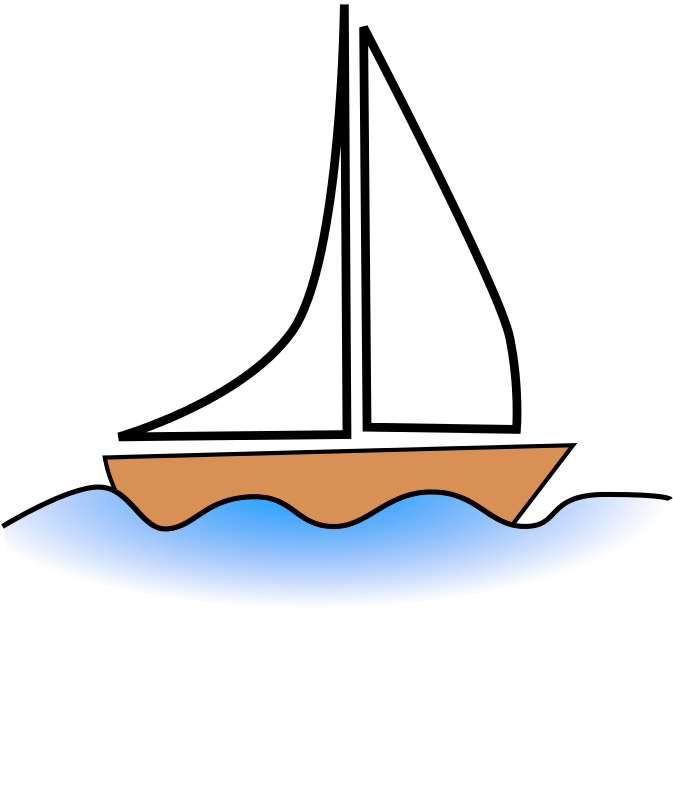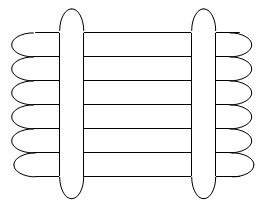Quick Look
Grade Level: 5 (4-5)
Time Required: 1 hour
Expendable Cost/Group: US $1.50
Group Size: 3
Activity Dependency: None
Subject Areas: Earth and Space
NGSS Performance Expectations:

| 3-5-ETS1-1 |
Summary
In the continuing (hypothetical) storyline of the Lost in the Amazon unit, students apply the concepts they learned regarding mass, volume and density in the previous activities to design boats to get them out of the jungle.
Engineering Connection
This lesson and activity provides an opportunity for student teams to complete the engineering design process used by practicing engineers including constructing and testing their designs. See the related unit's Engineering Connection for further explanation.
Learning Objectives
Apply the concepts learned in Lesson 6, Activity 1, to design floating rafts/boats using new materials.
Educational Standards
Each TeachEngineering lesson or activity is correlated to one or more K-12 science,
technology, engineering or math (STEM) educational standards.
All 100,000+ K-12 STEM standards covered in TeachEngineering are collected, maintained and packaged by the Achievement Standards Network (ASN),
a project of D2L (www.achievementstandards.org).
In the ASN, standards are hierarchically structured: first by source; e.g., by state; within source by type; e.g., science or mathematics;
within type by subtype, then by grade, etc.
Each TeachEngineering lesson or activity is correlated to one or more K-12 science, technology, engineering or math (STEM) educational standards.
All 100,000+ K-12 STEM standards covered in TeachEngineering are collected, maintained and packaged by the Achievement Standards Network (ASN), a project of D2L (www.achievementstandards.org).
In the ASN, standards are hierarchically structured: first by source; e.g., by state; within source by type; e.g., science or mathematics; within type by subtype, then by grade, etc.
NGSS: Next Generation Science Standards - Science
| NGSS Performance Expectation | ||
|---|---|---|
|
3-5-ETS1-1. Define a simple design problem reflecting a need or a want that includes specified criteria for success and constraints on materials, time, or cost. (Grades 3 - 5) Do you agree with this alignment? |
||
| Click to view other curriculum aligned to this Performance Expectation | ||
| This activity focuses on the following Three Dimensional Learning aspects of NGSS: | ||
| Science & Engineering Practices | Disciplinary Core Ideas | Crosscutting Concepts |
| Define a simple design problem that can be solved through the development of an object, tool, process, or system and includes several criteria for success and constraints on materials, time, or cost. Alignment agreement: | Possible solutions to a problem are limited by available materials and resources (constraints). The success of a designed solution is determined by considering the desired features of a solution (criteria). Different proposals for solutions can be compared on the basis of how well each one meets the specified criteria for success or how well each takes the constraints into account. Alignment agreement: | People's needs and wants change over time, as do their demands for new and improved technologies. Alignment agreement: |
International Technology and Engineering Educators Association - Technology
-
Students will develop an understanding of the attributes of design.
(Grades
K -
12)
More Details
Do you agree with this alignment?
-
Students will develop an understanding of engineering design.
(Grades
K -
12)
More Details
Do you agree with this alignment?
-
Models are used to communicate and test design ideas and processes.
(Grades
3 -
5)
More Details
Do you agree with this alignment?
Materials List
Each group needs:
- 1 large bowl, ~2" – 3" deep
- water in a pourable cup
- 6 Popsicle sticks
- aluminum foil, 12" x 12" piece
- scissors
- masking tape
- white glue
- kite string or similar type of string
- 2 sheets notebook paper
- small handful of at least one of the following materials; best to use the densest material(s) from the previous activity: small metal nuts (1/4 inch works well), paper clips, fish weights (without lead), dry beans, marbles
- Student Guide Worksheet, one per group
Worksheets and Attachments
Visit [www.teachengineering.org/activities/view/csm_lesson6_activity2_tg] to print or download.Introduction/Motivation
(Continue with the Lost in the Amazon unit storyline by reading the following to the class.) Given your need to cross the Amazon, you realize that the fastest way to continue is to use the river's current to float your way there. While building a boat may not be easy, you are tired of walking after so many days and the idea of floating down the river instead of continuing to hike appeals to everyone. Can you successfully design a boat to cross the river and float with the current downstream?
Procedure
- Gather materials and make copies of the Student Guide Worksheet, one per group.
- Creativity is the key to this activity. Encourage students to recall their experiences from the previous activity.
- Also have them recall the answers to the "What can you do to improve the amount of mass your boat will hold?" and "What shape did you change the clay to?"
- A suggested boat design is given below and may be shared with the class after groups have completed their designs so as to avoid having boats that look like the teacher's (that is, "the right answer").
- Tip: For students who struggle, or to encourage students to try different ideas, give hints, suggestions and prompts to students as makes sense. Make certain, though, that students understand that each group is expected to present one unique design and must be able to explain why they decided upon that design.
Helpful boat design (not on the student worksheet):
- Cut the 6 wooden craft sticks in half. Lay 5-6 stick pieces flat together on the table and use masking tape to tape them together as one unit (refer to Figure 1).

Figure 1: Example raft stick structure. - On the bottom of the flat stick structure created, place 4-5 pieces of tape rolled so the sticky part is on the outside of the tape (essentially creating double stick tape). Place these pieces of tape to one side of the stick structure.
- Fold the aluminum foil sheet twice, once in half and then in half again. Tape the stick structure to the center of the folded aluminum foil.
- Carefully fold the overlapping parts of the foil up to create sides so that the stick structure and foil create a box with no lid. The base is the stick structure and the sides are made of the foil.
- Tape the sides of the foil together to make it sturdy.
Assessment
Worksheet: Have groups use and complete the Student Guide Worksheet as they conduct the activity, working together to compose answers to the unit concluding questions. Review their answers to gauge their engagement and depth of comprehension. Answering the questions foreshadows the next (and final) lesson and activity in the unit.
Group Presentations: At activity end, have groups each make a short, two-minute presentation explaining why they chose their designs and how they used the knowledge gained from the previous activities to create their boats. Require every student to speak a portion of the presentation.
Subscribe
Get the inside scoop on all things TeachEngineering such as new site features, curriculum updates, video releases, and more by signing up for our newsletter!More Curriculum Like This

Through this lesson and its associated activities, students discover the relationship between an object's mass and the amount of space it takes up (its volume) as they create small boats that are able to float loads—which helps them get out of the jungle as part of the ongoing (hypothetical) storyli...

In the continuing (hypothetical) storyline of the Lost in the Amazon unit, students discover the relationship between an object's mass and the amount of space it takes up (its volume). As they create small boats using clay, they learn about the concept of displacement and how an object can float if ...
Copyright
© 2013 by Regents of the University of Colorado; original © 2005 Colorado School of MinesSupporting Program
Adventure Engineering, Colorado School of MinesAcknowledgements
Adventure Engineering was supported by National Science Foundation grant nos. DUE 9950660 and GK-12 0086457. However, these contents do not necessarily represent the policies of the National Science Foundation, and you should not assume endorsement by the federal government.
Last modified: November 12, 2020








User Comments & Tips